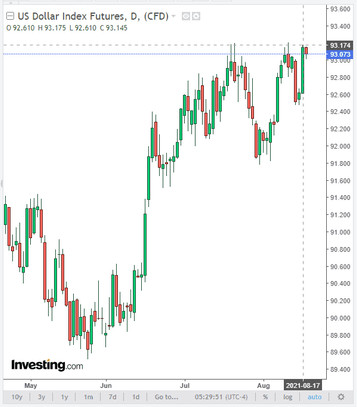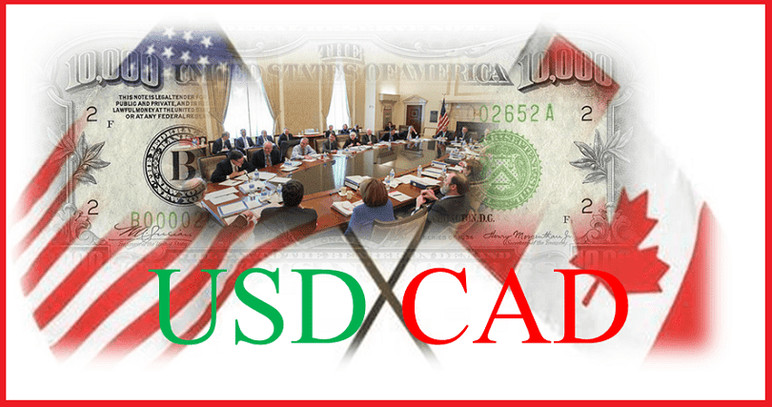Inflation in the UK slowed to 2.0% in July from 2.5% in June, the Office for National Statistics said today. Core inflation, which does not take into account food and energy prices, slowed down to 1.8% in July (versus 2.3% in July and 2.0% forecast).
The data on inflation in the Eurozone, published at the beginning of today's European session, also indicated its decline. The revised CPI of the Eurozone for July came out with a value of -0.1% (+2.2% y / y), which coincided with the first estimate, against +0.3% (+2.2% y / y) in June.
Both the pound and the euro reacted with only short-term declines. Now, similar inflation indicators today at 12:30 (GMT), together with the country's central bank will be published by Statistics Canada.
The core consumer price index (Core CPI) is expected to rise in July 2021 by +0.1% (+2.8% yoy) versus +0.3% (+2.7% yoy) in June. The core CPI, which reflects the dynamics of the retail prices of the corresponding basket of goods and services (excluding fruits, vegetables, gasoline, fuel oil, natural gas, mortgage interest, intercity transportation and tobacco products), is used by the Bank of Canada in determining the parameters of its monetary politics. The Bank of Canada's inflation target is in the 1% -3% range, and the rise in CPI is a harbinger of a rate hike and a positive factor for CAD. If the data for July turns out to be worse than the previous values and the forecast, it will negatively affect the CAD, and, accordingly, the data better than the previous values will strengthen the Canadian dollar.
At the same time, speaking about the outlook for the Canadian dollar, it is receiving strong support from oil prices, which maintain a positive momentum. Canada is the largest exporter of oil, and the share of oil and petroleum products in Canada's exports is approximately 22%.
There is now some uncertainty in the oil market around oil demand due to the spread of the delta strain of the coronavirus. However, many leading economists are forecasting an increase in demand in the second half of 2021 if the relaxation of quarantine restrictions and the pace of vaccinations gain momentum. This may have a positive effect on the quotes of the Canadian dollar. Despite OPEC+ plans to increase production, the supply in the oil market is still "slightly insufficient", oil market analysts say. Thus, long-term investments in the Canadian dollar still look attractive.
Since April 2020, USD / CAD has been in a bearish trend, expressed by a downward channel on the weekly price chart, and at the beginning of today's European session, the pair is traded in an area below the important long-term resistance level 1.2660 (see Technical Analysis and Trading Recommendations).
Meanwhile, at the beginning of today's European session, there is a sluggish trading dynamic.
Investors are cautious ahead of the publication (at 18:00 GMT) of the minutes of the July Fed meeting. The publication of the minutes is extremely important in determining the course of the current Fed policy and the prospects for raising interest rates in the United States. The volatility of trading in financial markets during the publication of the protocol usually increases, since its text often contains either changes or clarifying details regarding the results of the last Fed meeting.
It is important for market participants to understand how central bankers discussed the timetable for withdrawing from the quantitative easing program, especially after some of them said they expected to start phasing out in the fall.
In the first half of today's trading day, the DXY dollar index stabilized in the area of yesterday's 5-week highs (near the mark of 93.17).

The dollar strengthened sharply on Tuesday in response to rising anxiety over the new strain of coronavirus. Fed Chairman Jerome Powell said yesterday that it is not yet known how the US economy will weather the recent surge in Covid-19.
"The Covid pandemic is still affecting economic activity. We still feel it to a great extent. You see, we cannot declare victory yet", he said.
Recently, Fed officials have become slightly more inclined to roll back the soft monetary policy introduced at the beginning of the pandemic, and the protocols may shed light on these plans. If there is a signal in them about the likelihood of a soon start to a reduction in asset purchases, the US dollar may rise sharply.





